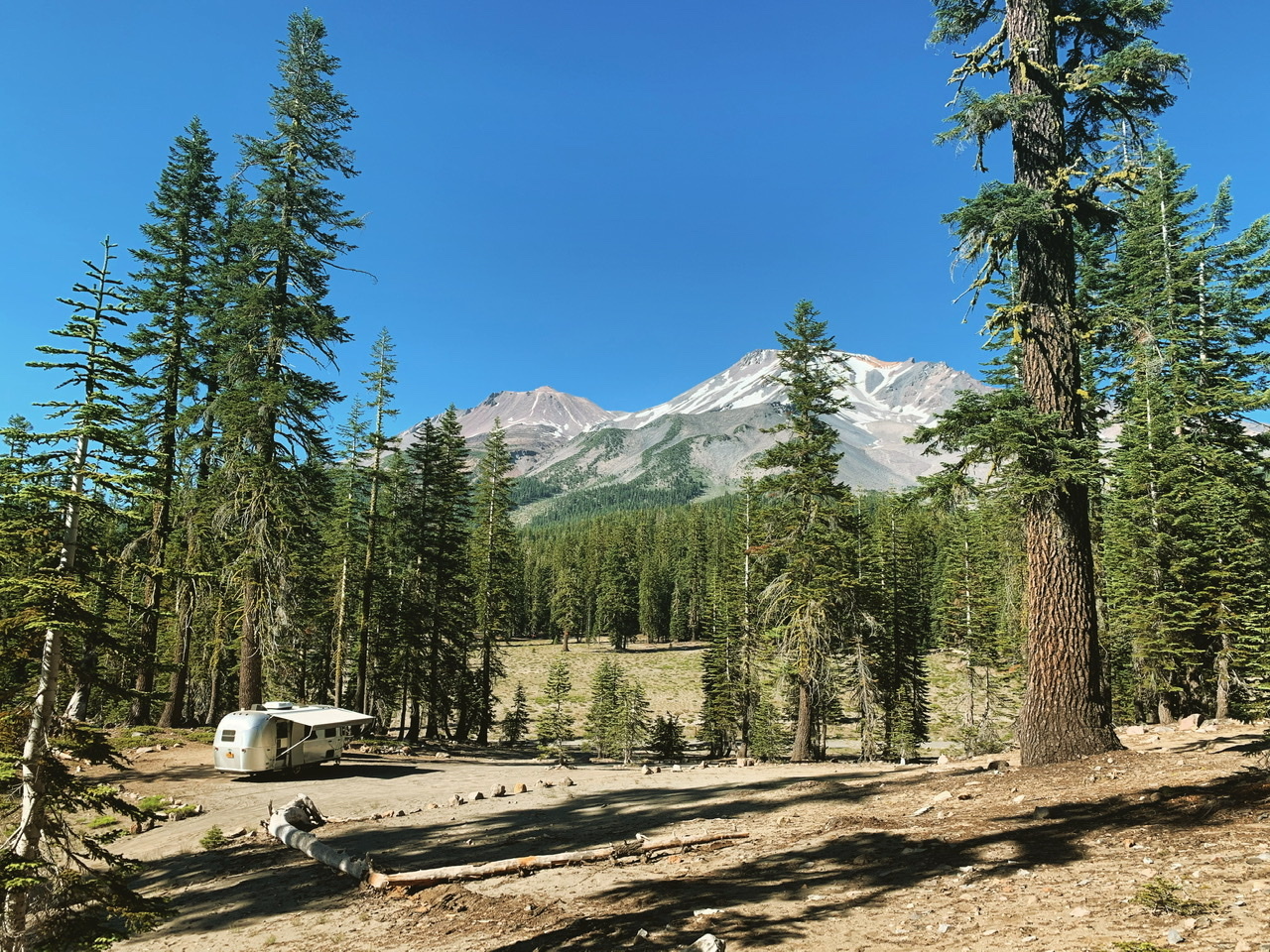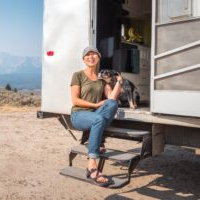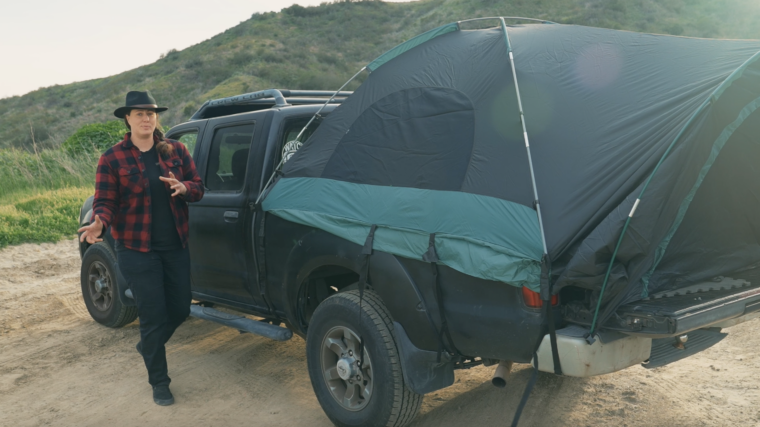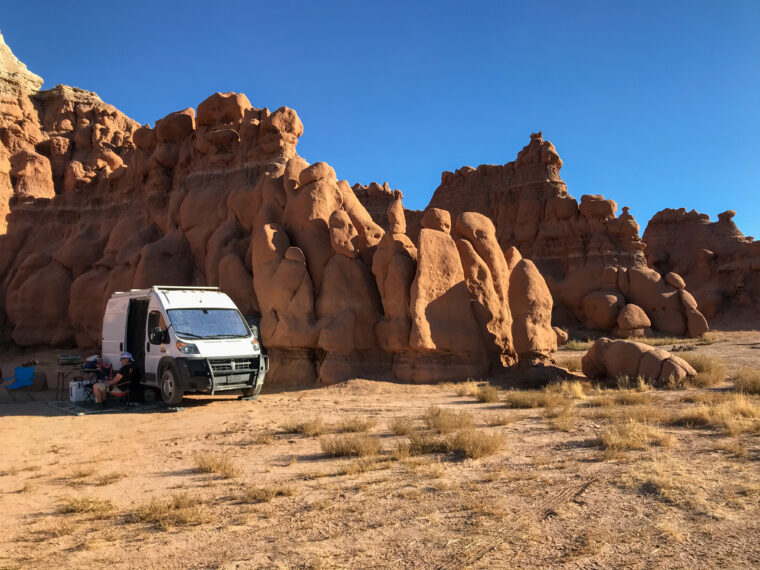For boondockers, there’s nothing like finding the perfect site that makes you want to camp there forever. While that’s not an option, staying for the allotted amount of time allowed by public lands is. The trade-off to boondocking is giving up the convenience of shore power and water connections.
The Ultimate Guide to Boondocking
Popular places like Bridger-Teton National Forest have shortened their stay limit to 5 days, but most national forests and Bureau of Land Management (BLM) lands have a 14-day limit—whether you’re tent camping or boondocking in a rig. The question is: How do you make it 2 weeks without being hooked up?
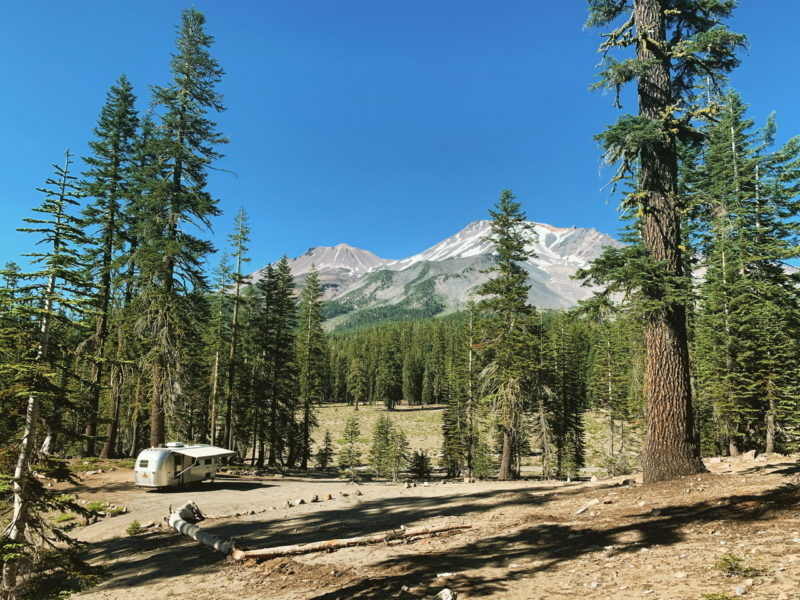
5 Tips for A Safe Boondocking Experience
The main limiting factors when it comes to boondocking are access to fresh water and electricity, and the capacity of your gray and black water tanks. Propane is a factor too, but it’s not generally difficult to carry enough propane for 2 weeks. Arriving with full fresh water and propane, and empty black and gray tanks is a good starting point, but here are some seasoned tips on how to extend your stay out in the wild.
Prepare Food in Advance
Wash your freshly bought produce before you hit the dump station. It may not seem like a lot, but washing fruits and vegetables uses a decent amount of water and takes up space in your gray tanks. Pre-cooking meals before arriving at your destination also helps to preserve water.
How to Conserve Water When RVing
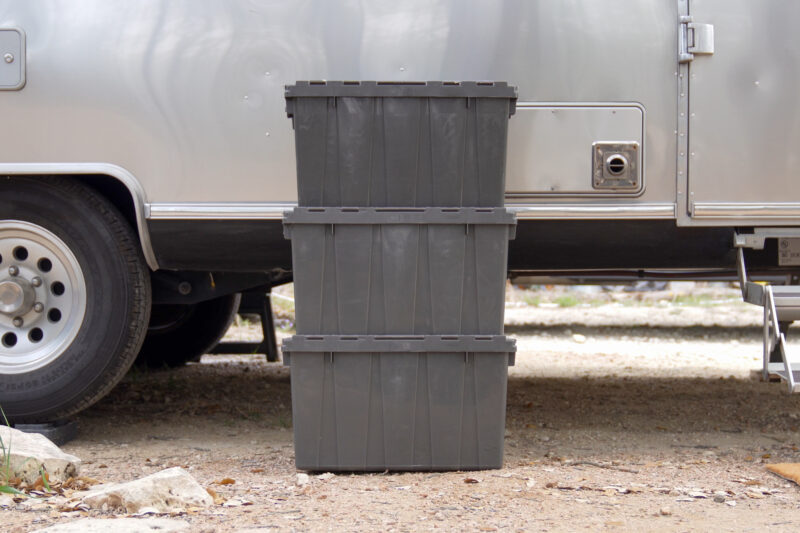
Decrease Your Trash
The lack of amenities at boondocking sites also means that trash and recycling cans aren’t available. Minimize the amount of trash you generate by buying fewer pre-packaged foods. If you do, throw away packaging before heading to your new campsite. Opt for reusable dish towels and napkins instead of paper products, and try not to waste food. When it’s time to take out the trash, be mindful about leaving it outside where wildlife can get it. It not only creates a huge mess when trash bags are torn open, but it’s hazardous to wildlife. Store trash and recyclables in enclosed, latched, hard containers. And if you’re in bear country, don’t put trash outside at all.
Do Dishes Immediately
Dried and crusty bowls, plates, and pots take more water to soak and wash. Cleaning up right after a meal actually helps conserve water. While many people turn to disposable tableware when boondocking, it’s not an environmentally friendly option (and means more trash to deal with). Consider getting smaller reusable plates and bowls instead. Less surface area means less to wash.
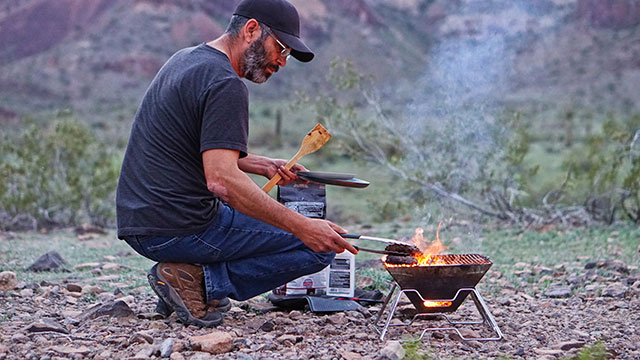
Be Strategic About Cooking
One-pot meals are an excellent way to conserve water while boondocking. A pressure cooker is great for this and it’s also energy efficient. The same pot can be used to make multiple dishes if one-pot meals aren’t your jam. Wash fewer dishes by reusing dishes for food preparation and eating. Also, meat-free meals typically require less water to clean up compared to raw meat and its grease.
8 Instant Pot Recipes to Make at the RV Campground
Cooking over a campfire can also be an option when fire bans aren’t in place. Instead of creating a new fire ring if one isn’t available, use a folding charcoal grill.
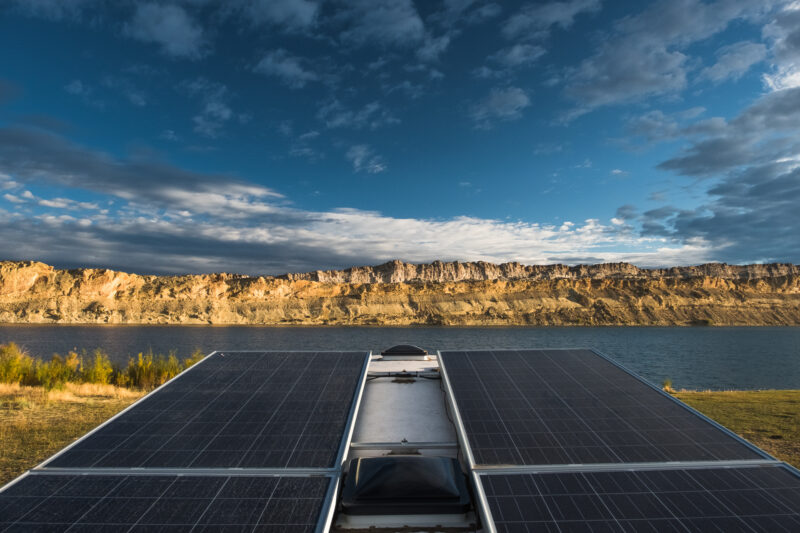
Think Ahead About Electricity Usage
Be intentional and flexible with your electricity usage if you utilize solar power. If your batteries are near full and there are still several good hours of sunlight left, it’s a great opportunity to run your induction cooktop or electric hot water heater. If there are cloudy days forecasted, make meals and charge up gadgets in advance so you can conserve power later.
Use Your Inverter Less
It’s more energy efficient to leave your inverter turned completely off whenever possible, even if it has a “standby” or “power saver” mode. Instead, install auxiliary power outlets and use car adapters or USB ports instead of wall ports to run personal electronics.
How to Get Power While Boondocking
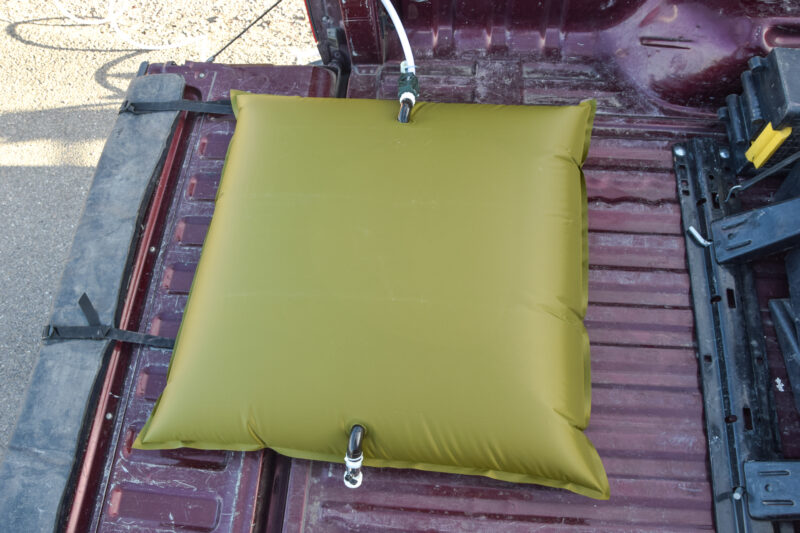
Have Backup Water and Black Tank Plan
If you have the space, a water storage bag and black water caddy can help extend your boondocking stay by letting you use your tow vehicle or toad to fetch more potable water without breaking camp. Water storage bags can fold up easily to be stored, but require a lot of space when you’re bringing 30 to 100 gallons of water back to your rig.
These bags are only useful if your gray tanks are larger than your fresh water tank. If there isn’t a nearby place for you to get potable water, but you’re near a river or lake, a gravity water filter can be an excellent alternative.
An RV black water caddy allows you to empty some of your black tank if there’s a dump station nearby or store it until you leave camp.
Adjust Showers
Showering doesn’t have to use a lot of water—it’s doable to use less than 1 gallon of water per shower. Minimize water usage by turning on the showerhead once to get wet and once to rinse off the soap. RV shower heads with an on and off button let you conveniently do that. Bowl showers are also effective—jump in the shower with a bowl of water and a washcloth to clean. You can also use the bowl to collect water while you’re waiting for it to run hot and use it elsewhere.
6 Tips for Showering and Staying Clean While on the Road
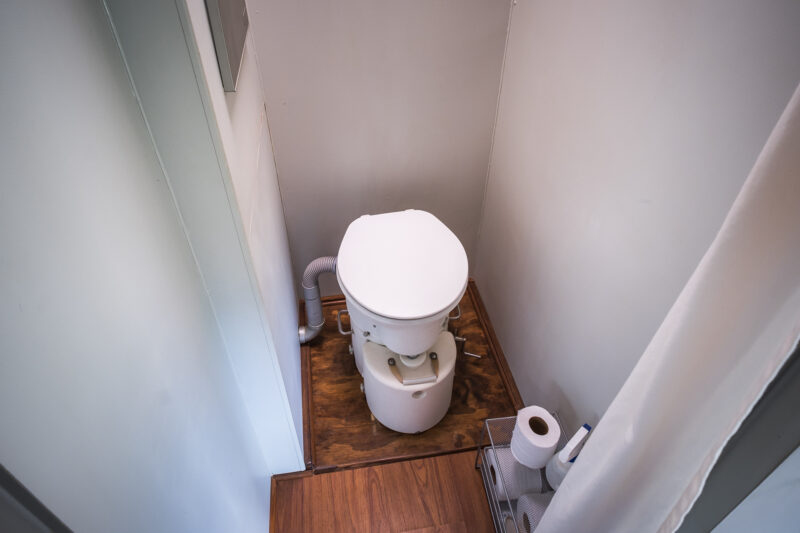
Switch to a Composting Toilet
RV toilets are more water-efficient than residential ones, but they still use water with every flush. Full black tanks are a common reason RVers need to leave camp and head to a dump station. A composting toilet doesn’t use any water and, depending on the number of people using it, the solid tank doesn’t have to be emptied for at least 14 days. Plus, using a composting toilet means you can convert your black tank to an additional gray tank.
With these tips, you can confidently stay the full stay limit allotted by public land management and focus your energy on enjoying the scenery and trails around you.
